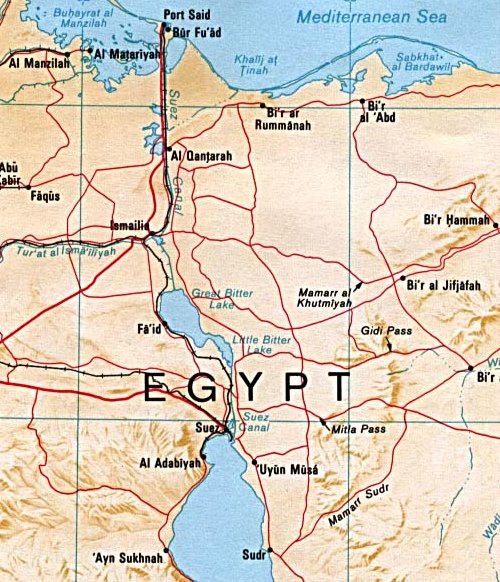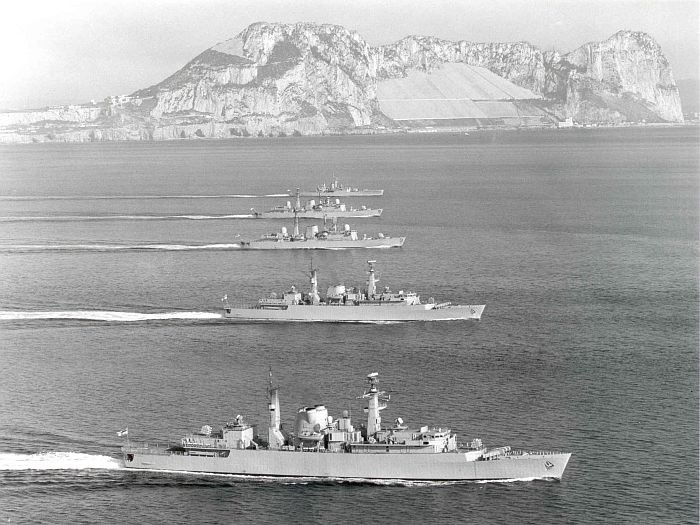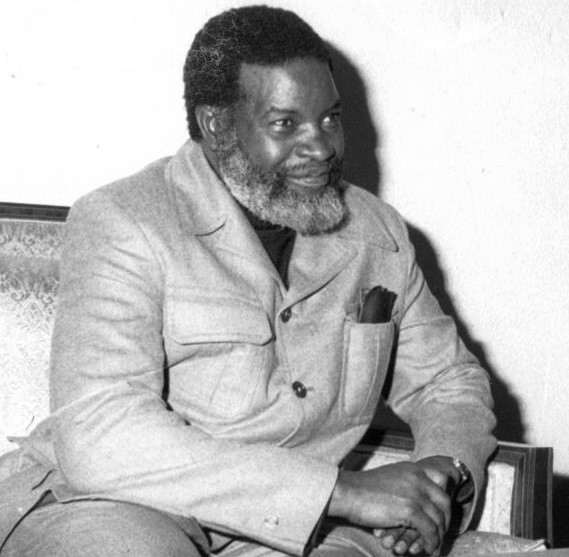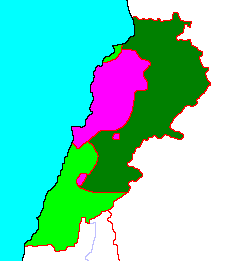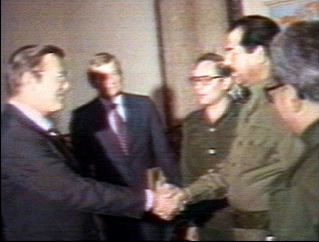|
Strela-2
The 9K32 Strela-2 (; NATO reporting name SA-7 Grail) is a light-weight, shoulder-fired, surface-to-air missile or MANPADS system. It is designed to target aircraft at low altitudes with passive infrared-homing guidance and destroy them with a high-explosive warhead. Broadly comparable in performance with the US Army FIM-43 Redeye, the Strela-2 was the first Soviet man-portable SAM – full-scale production began in 1970. While the Redeye and 9K32 Strela-2 were similar, the missiles were not identical. The Strela-2 was a staple of the Cold War and was produced in huge numbers for the Soviet Union and their allies, as well as revolutionary movements. Though since surpassed by more modern systems, the Strela and its variants remain in service in many countries, and have seen use in nearly every regional conflict since 1972. Development The end of World War II led to a major shift in Soviet defence policy. The advent of long range, high altitude, nuclear-armed American bombe ... [...More Info...] [...Related Items...] OR: [Wikipedia] [Google] [Baidu] |
MANPADS
Man-portable air-defense systems (MANPADS or MPADS) are portable shoulder-launched surface-to-air missiles. They are guided weapons and are a threat to low-flying aircraft, especially helicopters and also used against low-flying cruise missiles. These short-range missiles can also be fired from vehicles, tripods, weapon platforms, and warships. Overview MANPADS were developed in the 1950s to provide military ground forces with protection from jet aircraft. They have received a great deal of attention, partly because armed terrorist groups have used them against commercial airliners. These missiles, affordable and widely available through a variety of sources, have been used successfully over the past three decades, both in military conflicts, by militant groups, and by terrorist organizations. Twenty-five countries, including China, Iran, Poland, Russia, Sweden, the United Kingdom and the United States produce man-portable air defense systems.CRS RL31741 page 1 Possession, ... [...More Info...] [...Related Items...] OR: [Wikipedia] [Google] [Baidu] |
War Of Attrition
The War of Attrition (; ) involved fighting between Israel and Egypt, Jordan, the Palestine Liberation Organisation (PLO) and their allies from 1967 to 1970. Following the 1967 Six-Day War, no serious diplomatic efforts were made to resolve the issues at the heart of the Arab–Israeli conflict. The 1967 Arab League summit formulated in September the "Khartoum Resolution, three no's" policy, barring peace, International recognition of Israel, recognition, or negotiations with Israel. Egyptian President Gamal Abdel Nasser believed that only military initiative would compel Israel or the international community to facilitate a full Israeli withdrawal from Sinai Peninsula, Sinai, and hostilities soon resumed along the Suez Canal. These initially took the form of limited artillery duels and small-scale incursions into Sinai, but by 1969, the Egyptian Army judged itself prepared for larger-scale operations. On March 8, 1969, Nasser proclaimed the official launch of the War of Attri ... [...More Info...] [...Related Items...] OR: [Wikipedia] [Google] [Baidu] |
Falklands War
The Falklands War () was a ten-week undeclared war between Argentina and the United Kingdom in 1982 over two British Overseas Territories, British dependent territories in the South Atlantic: the Falkland Islands and Falkland Islands Dependencies, its territorial dependency, South Georgia and the South Sandwich Islands. The conflict began on 2 April 1982, when 1982 invasion of the Falkland Islands, Argentina invaded and Occupation of the Falkland Islands, occupied the Falkland Islands, followed by the invasion of South Georgia the next day. On 5 April, the British government dispatched a British naval forces in the Falklands War, naval task force to engage the Argentine Navy and Argentine Air Force, Air Force before making an Amphibious warfare, amphibious assault on the islands. The conflict lasted 74 days and ended with an Argentine Argentinian surrender in the Falklands War, surrender on 14 June, returning the islands to British control. In total, 649&nbs ... [...More Info...] [...Related Items...] OR: [Wikipedia] [Google] [Baidu] |
South African Border War
The South African Border War, also known as the Namibian War of Independence, and sometimes denoted in South Africa as the Angolan Bush War, was a largely asymmetric conflict that occurred in Namibia (then South West Africa), Zambia, and Angola from 26 August 1966 to 21 March 1990. It was fought between the South African Defence Force (SADF) and the People's Liberation Army of Namibia (PLAN), an armed wing of the South West African People's Organisation (SWAPO). The South African Border War was closely intertwined with the Angolan Civil War. Following several years of unsuccessful petitioning through the United Nations and the International Court of Justice for Namibian independence from South Africa, SWAPO formed the PLAN in 1962 with material assistance from the Soviet Union, China, and sympathetic African states such as Tanzania, Ghana, and Algeria. Fighting broke out between PLAN and the South African security forces in August 1966. Between 1975 and 1988, the SADF staged m ... [...More Info...] [...Related Items...] OR: [Wikipedia] [Google] [Baidu] |
Syrian Occupation Of Lebanon
The Syrian occupation of Lebanon lasted from 31 May 1976, beginning with the Syrian intervention in the Lebanese Civil War, until 30 April 2005. This period saw significant Syrian military and political influence over Lebanon, impacting its governance, economy, and society. During the occupation, tens of thousands of Lebanese civilians were abducted and forcibly disappeared in Ba'athist Syrian prison camps. The whereabouts of an estimated 30,000 of them remain unknown. The occupation ended following intense international pressure and the assassination of former Lebanese Prime Minister Rafic Hariri. The legacy of the occupation continues to influence Lebanese-Syrian relations and Lebanon's internal political dynamics. Summary In January 1976, Syria proposed restoring the pre-civil war limits on the Palestinian guerrilla presence in Lebanon. This proposal was welcomed by Maronites but rejected by the Palestinian guerrillas. By October 1976, during an Arab League meeting ... [...More Info...] [...Related Items...] OR: [Wikipedia] [Google] [Baidu] |
Second Sudanese Civil War
The Second Sudanese Civil War was a conflict from 1983 to 2005 between the central Sudanese government and the Sudan People's Liberation Army/Movement, Sudan People's Liberation Army. It was largely a continuation of the First Sudanese Civil War of 1955 to 1972. Although it originated in southern Sudan, the civil war spread to the Nuba mountains and the Blue Nile. It lasted for almost 22 years and is one of the longest civil wars on record. The war resulted in the independence of South Sudan 6 years after the war ended. Roughly two million people died as a result of war, famine and disease caused by the conflict. Four million people in southern Sudan were Refugees, displaced at least once, normally repeatedly during the war. The civilian death toll is one of the highest of any war since World War II and was marked by numerous Human rights, human rights violations, including Slavery in Sudan, slavery and mass killings. Background and causes Wars in Sudan are often characteriz ... [...More Info...] [...Related Items...] OR: [Wikipedia] [Google] [Baidu] |
Soviet–Afghan War
The Soviet–Afghan War took place in the Democratic Republic of Afghanistan from December 1979 to February 1989. Marking the beginning of the 46-year-long Afghan conflict, it saw the Soviet Union and the Armed Forces of the Democratic Republic of Afghanistan, Afghan military fight against the rebelling Afghan mujahideen, aided by Pakistan. While they were backed by various countries and organizations, the majority of the mujahideen's support came from Pakistan, the United States (as part of Operation Cyclone), the United Kingdom, China, Iran, and the Arab states of the Persian Gulf, in addition to a large influx of foreign fighters known as the Afghan Arabs. American and British involvement on the side of the mujahideen escalated the Cold War, ending a short period of relaxed Soviet Union–United States relations. Combat took place throughout the 1980s, mostly in the Afghan countryside, as most of the country's cities remained under Soviet control. The conflict resulted in the de ... [...More Info...] [...Related Items...] OR: [Wikipedia] [Google] [Baidu] |
War In Afghanistan (2001–2021)
The war in Afghanistan was a prolonged armed conflict lasting from 2001 to 2021. It began with United States invasion of Afghanistan, the invasion by a Participants in Operation Enduring Freedom, United States-led coalition under the name Operation Enduring Freedom in response to the September 11 attacks carried out by al-Qaeda. The Taliban and its allies were quickly expelled from major population centers by US-led forces supporting the anti-Taliban Northern Alliance, thus toppling the Taliban-ruled Islamic Emirate of Afghanistan (1996–2001), Islamic Emirate. Three years later the US-sponsored Islamic Republic of Afghanistan, Islamic Republic was established, but by then the Taliban had reorganized under their founder, Mullah Omar, and began Taliban insurgency, a widespread insurgency against the new Afghan government and coalition forces. The conflict finally ended decades later as the 2021 Taliban offensive reestablished the Islamic Emirate. It was the List of the lengths ... [...More Info...] [...Related Items...] OR: [Wikipedia] [Google] [Baidu] |
Soviet Union
The Union of Soviet Socialist Republics. (USSR), commonly known as the Soviet Union, was a List of former transcontinental countries#Since 1700, transcontinental country that spanned much of Eurasia from 1922 until Dissolution of the Soviet Union, it dissolved in 1991. During its existence, it was the list of countries and dependencies by area, largest country by area, extending across Time in Russia, eleven time zones and sharing Geography of the Soviet Union#Borders and neighbors, borders with twelve countries, and the List of countries and dependencies by population, third-most populous country. An overall successor to the Russian Empire, it was nominally organized as a federal union of Republics of the Soviet Union, national republics, the largest and most populous of which was the Russian SFSR. In practice, Government of the Soviet Union, its government and Economy of the Soviet Union, economy were Soviet-type economic planning, highly centralized. As a one-party state go ... [...More Info...] [...Related Items...] OR: [Wikipedia] [Google] [Baidu] |
Yugoslav Wars
The Yugoslav Wars were a series of separate but related#Naimark, Naimark (2003), p. xvii. ethnic conflicts, wars of independence, and Insurgency, insurgencies that took place from 1991 to 2001 in what had been the Socialist Federal Republic of Yugoslavia (SFR Yugoslavia). The conflicts both led up to and resulted from the breakup of Yugoslavia, which began in mid-1991, into six independent countries matching the six Republics of Yugoslavia, entities known as republics that had previously constituted Yugoslavia: Slovenia, Croatia, Bosnia and Herzegovina, Montenegro, Serbia, and North Macedonia, Macedonia (now Macedonia naming dispute, called North Macedonia). SFR Yugoslavia's constituent republics declared independence due to rising nationalism. Unresolved tensions between ethnic minorities in the new countries led to the wars. While most of the conflicts ended through peace accords that involved full international recognition of new states, they resulted in a massive number of d ... [...More Info...] [...Related Items...] OR: [Wikipedia] [Google] [Baidu] |
Gulf War
, combatant2 = , commander1 = , commander2 = , strength1 = Over 950,000 soldiers3,113 tanks1,800 aircraft2,200 artillery systems , page = https://www.govinfo.gov/content/pkg/GAOREPORTS-PEMD-96-10/pdf/GAOREPORTS-PEMD-96-10.pdf , strength2 = 1,000,000+ soldiers (~600,000 in Kuwait)5,500 tanks700+ aircraft3,000 artillery systems , casualties1 = Total:13,488 Coalition:292 killed (147 killed by enemy action, 145 non-hostile deaths)776 wounded (467 wounded in action)31 tanks destroyed/disabled28 Bradley IFVs destroyed/damaged1 M113 APC destroyed2 British Warrior APCs destroyed1 artillery piece destroyed75 aircraft destroyedKuwait:420 killed 12,000 captured ≈200 tanks destroyed/captured 850+ other armored vehicles destroyed/captured 57 aircraft lost 8 aircraft captured (Mirage F1s) 17 ships sunk, 6 captured. Acig.org. Retrieved on 12 June 2011 , casualties2 = Total:175,000–300,000+ Iraqi:20,000–50,000 killed ... [...More Info...] [...Related Items...] OR: [Wikipedia] [Google] [Baidu] |


